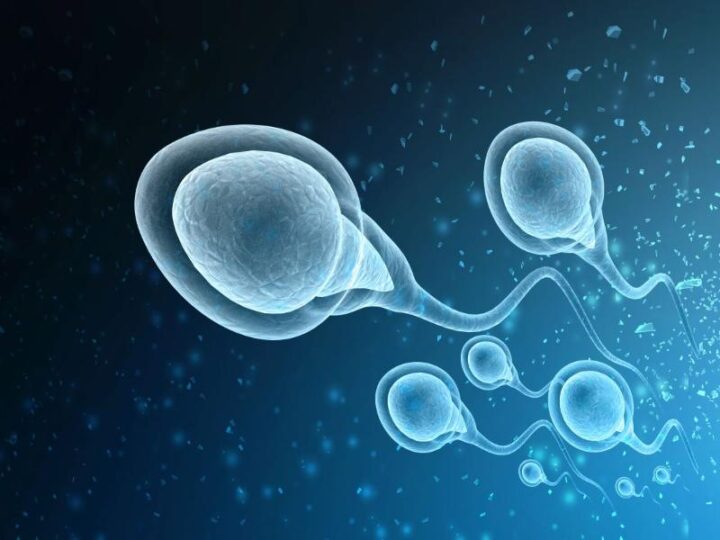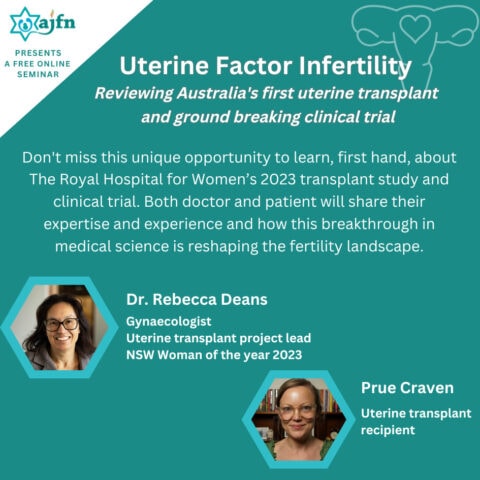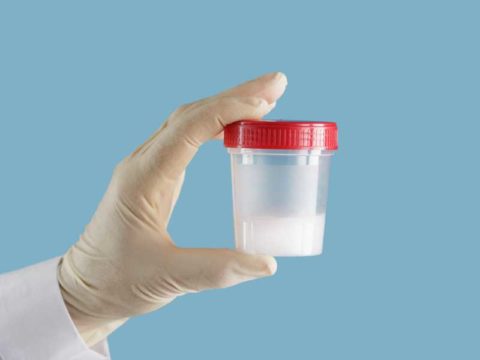Developments in research, law and practice
By Sarah Wise and Gabor Kovacs
AN INCREASING NUMBER OF babies are being born using donated sperm, where the resulting child is genetically related to the mother but not to the father who raises the child. This chapter discusses a tendency towards secrecy among parents of donor- conceived children, and developments in law and practice designed to ensure children born through donated sperm know how they were conceived and have access to information about their donors and half-siblings. This is couched in what we know about the implications of knowledge and secrecy for family wellbeing and child adjustment. It draws on new research from the Follow-Up of Children Conceived Through Donor Insemination project—a study of 111 Victorian donor-conceived children nested within the Australian Institute of Family Studies’ Children and Family Life study.
What is sperm donation?
Sperm donation refers to the use of sperm that has been donated by a third person (donor) to assist an individual or couple in their attempt to become parents. Donor sperm has been used for many decades to achieve pregnancies for couples where the male is infertile or carries a genetic abnormality or hereditary disease. Initially donations were made with fresh sperm (Newton, 1976), and then more extensively with frozen sperm, following the development in 1964 of the technology for freezing and banking sperm using liquid nitrogen (Perloff, Steinberger, & Sherman, 1964). In 1988 in Victoria, the first legislation in the world to regulate assisted reproductive treatment came into effect. Reliable and central donor conception records have resulted in a more or less accurate count of children conceived with donated sperm since that time. The records show that 3,855 Victorian children were conceived with donated sperm between 1988 and 2011 (Victorian Law Reform Committee, 2012). Many thousands more children would have been conceived using donor sperm across the rest of Australia.
Secrecy, the law and practice in donor conception
Current disclosure practice and legislation
Over the past four decades or so, legislation and donor conception practices in Australia have evolved significantly to encourage greater knowledge and openness. In the past, donor insemination was based on the principle of anonymity. Nowadays, there is a strong move among service providers towards advising disclosure. Practices and ethical standards have been developed by the Reproductive Technology Accreditation Committee of the Fertility Society of Australia (2010) and the National Health and Medical Resource Council (2007) to help prospective recipients understand the significant biological connection that their children will have with the sperm donor. Service providers are encouraged to advise recipients that their children are entitled to knowledge of their biological parents and half-siblings, and that recipients should tell their children about their origins.
Laws also exist in some states (Victoria, NSW and Western Australia) to uphold the right of children born through donated sperm to access information about their biological parents and half-siblings. The main points are that donors must give explicit written consent to providing identifying information to any offspring from his donation once they reach 18 years of age. Identifying information about the donor of the sperm will be placed on a central registry and once the child is 18 years of age, he or she will have access to this information.
However, despite practices and legislation that encourage openness, there are no laws currently in existence that compel parents to tell donor-conceived children about their origins. This is critical, because unlike adoption, where it is more difficult or sometimes impossible to hide the fact that a child was adopted, keeping donor insemination secret is quite easy. It is also important because the majority of couples who conceive using donor sperm do not disclose this fact to their children.
Secrecy within donor conception families
Studies conducted in Australia and overseas suggest that the majority of donor-conceived children remain unaware that the person they know as their father is not their biological parent. In Readings and colleagues’ study of 36 donor insemination families recruited from the United Kingdom, most parents had maintained secrecy about their child’s origins when the child was aged seven years (Readings, Blake, Casey, Jadva, & Golombok, 2011). In a representative sample of more than 100 donor insemination families in Spain, Italy, The Netherlands and the United Kingdom, not one set of parents had disclosed the donor conception to their child by early school age and only 9% of parents had done so by early adolescence (Golombok et al., 2011). High levels of secrecy were also reported in a study from the United States, conducted in both 1980 and 1996, where approximately 80% of over 134 and 110 couples surveyed respectively decided not to inform their children about the nature of their conception (van Berkel, van der Veen, Kimmel, & te Velde, 1999). Similar findings were reported by Brewaeys (1996) in a review of 23 studies, all of which found that the vast majority of parents had not informed the child.
A trend towards secrecy has also been found in Australia. A report from Sydney showed that only 22 out of 420 (5%) donor-conceived children had been told of their origin (Durna, Bebe, Steigrad, Laeder, & Garrett, 1997). In the Follow-Up of Children Conceived Through Donor Insemination study, only 39 of 111 (35%) successful couples 82 Australian Institute of Family Studies 9 Secrecy, family relationships and the welfare of children born with the assistance of donor spermat the Reproductive Medicine Clinic of Prince Henry’s Institute of Medical Research between 1989 and 1999 had told their child about the use of donor sperm when the child was between 5 and 13 years of age (Kovacs, Wise, & Finch, 2012).
What is surprising is that parents’ behaviours have changed little over the twenty or so years during which this body of research has been conducted, despite the embedding of more enlightened principles in law and practice. There are grounds to believe that parental decisions not to disclose the donor conception relates to the imbalance between parents in biological relatedness to the child and a fear that disclosure would disrupt the child’s relationship with the non-biological parent (Cook, Golombok, Bish, & Murray, 1995).
Proposed legislative change to uphold the rights of donor-conceived people
Concern about the secrecy that surrounds families created through sperm donation has prompted consideration of legislative change to give children the right to know if they were conceived using donor gametes and to have access to information about their donors.
The State Parliament in New South Wales Legislative Committee on Law and Safety (2012), for example, is considering whether there should be provision for the Registrar of Births, Deaths and Marriages to include donor details on the register of births. Currently, a donor-conceived person’s birth certificate does not tell them about their biological parent. Use of birth certificates for identification purposes takes into account issues of privacy to ensure that donor-conceived children are not stigmatised by being treated differently to other children. In Victoria, the Law Reform Committee has recommended that the Victorian Government introduce retrospective legislation to allow all donor-conceived people to obtain identifying information about their donors. Currently, children born through sperm donations are given different levels of access to information about their heritage. Those born after 1988 can obtain identifying information about their biological fathers; those born before 1988 cannot, as the previous legislation protected donors’ identities (Victorian Law Reform Committee, 2012). The committee has also recommended that non-identifying information about half-siblings (including the number of donor- conceived siblings, sex and the year and month of birth) be made available so donor- conceived people can be assured that they are not forming a relationship with someone to whom they are biologically related.
In both examples, the proposed legislative changes stop short of saying parents should be legally obliged to tell their children, but such measures would encourage parents to discuss the topic with their children before they unexpectedly discover their biological origins.
Family relationships and child welfare in donor insemination families
The push for greater knowledge, openness and access to identifying information is based on the idea that this contributes to the welfare of donor-conceived people. The welfare of donor offspring is considered to outweigh the interests of donors and parents, who may not want information shared with others.
Parallels have been drawn to the experience of adopted children, who clearly benefit from having open communication with their parents about their adoption and information about their biological parents (Brodzinsky, 2006; Grotevant, 2007; Palacios & Brodzinsky, 2010). Like open adoptions (Howe & Feast, 2000; Wrobel & Dillon, 2009), young donor- conceived children tend to show curiosity about their unknown donor and a desire to discover more about him (Rumball & Adair, 1999; Vanfraussen, Ponjaert-Kristoffersen, & Brewaeys, 2001). Adolescents who have known about their donor conception since childhood also wish to find out more about their donor, with many believing that this would help them acquire a more complete sense of identity (Jadva, Freeman, Kramer, & Golombok, 2009; Scheib, Riordan, & Rubin, 2005).
In turn, donor-conceived children are known to experience confusion and distress if access to information about donors is withheld (McNair, 2004; Victorian Law Reform Commission, 2012). Those who discover their donor conception later in life—particularly those who find out by accident or under adverse circumstances, such as during parental divorce or a health crisis requiring genetic information or donation—are also apt to respond negatively (Jadva et. al., 2009; Turner & Coyle, 2000).
Yet, as discussed above, very few donor-conceived individuals have been told about their genetic origins. While parents operate on the theory that “what they don’t know won’t hurt them”, counsellors and psychologists who advocate that families should be honest with their children suggest that secrecy can interfere with relationship dynamics, jeopardise communication between family members and lead to child psychological problems (Daniels & Taylor, 1993; Schaffer & Diamond, 1993). Clamar (1989), for example, has suggested that keeping the circumstances of conception secret separates those who know the secret (the parents) from those who do not (the children), resulting in a distancing of some members of the family from the others.
Interestingly, the available research does not support the theory that family relationships and children’s welfare is compromised when donor-conceived children are unaware of their origins. Indeed, the published empirical studies involving donor conception families (most of whom have not disclosed) suggest that the majority of fathers had good relationships with their children and felt secure in their parental role, marital satisfaction was high and, on average, child adjustment was normal (Brewaeys, 2001). In Owen and Golombok’s (2009) study comparing 26 donor insemination families with 26 in-vitro fertilisation (IVF) families, 238 adoptive families and 63 natural conception families close to the donor-conceived children’s 18th birthday, warmth in the mother–adolescent relationship was significantly higher in donor insemination families than the other families. Only two of the donor-conceived children were aware of their donor conception.
The Follow-Up of Children Conceived Through Donor Insemination study involved 111 donor conception families when the children were 5–13 years of age, and a very large control group of children in natural conception families (310 single-mother, 693 couple-parent, and 92 step-father families). The study used in-depth measures of family functioning with known psychometric properties (Wise, 2003; Wise & Edwards, 2004).
The functioning of these families and the development of the children were measured across 15 family and child wellbeing variables. In all of the family wellbeing and parenting outcomes considered, there was not one result where the donor conception families showed poorer functioning on average than the comparison groups. The findings of this study showed that the donor conception families were not substantially different on average from other family types in terms of family wellbeing nor in the 9 Secrecy, family relationships and the welfare of children born with the assistance of donor sperm development of the children (Kovacs et al., 2012). However, donor conception families showed a higher level of functioning than step-families. Fathers in donor conception families also reported a better quality relationship with their spouse on the dimensions of conflict and positive relationships compared to step-fathers. Interestingly, fathers in donor conception families also reported higher involvement and nurturance in relation to their parenting of children conceived through use of donor sperm compared to step- fathers and their step-children. Mothers in donor conception families also reported a more positive relationship with their children than single mothers did with theirs.
There has only been one previous study (Nachtingall, Tschann, Quiroga, Pitcher, & Becker, 1997) that has compared family functioning between donor-conceived children who have and haven’t been told of their origins. This study examined 94 donor conception families with adolescent donor sperm children, using a variety of standardised questionnaires regarding parental attitudes, parental involvement, marital satisfaction and marital intimacy. Findings revealed no difference between children who had and hadn’t been told. In the Follow-Up of Children Conceived Through Donor Insemination study, disclosure status was known for 62 of the donor insemination families (29 families where the children had been told and 33 families where the method of conception was still a secret). These families were compared on 15 family and child wellbeing outcomes to estimate mean differences according to knowledge of conception. Mean differences between the two groups were generally very small, not statistically significant and not clinically meaningful; adjustment for covariates did not make a substantive change to the interpretation of group differences. However, further research is necessary to unpack important questions relating to the consequence of discovery (either intentional or accidental) on family relationships at different stages in development.
Conclusions
When donor sperm was first used to achieve pregnancies, donors remained anonymous and very few parents chose to tell. Developments in Australian laws and practice have given or plan to give people conceived with the assistance of donor sperm greater access to information about donors. While knowledge of half-siblings and equality of access to information for people who were conceived before the mandatory provision of identifying information is undecided, nowadays sperm donors understand that there may be future contact with the individuals conceived from their donation and may consent to the release of identifying information in order to facilitate such future contact. The laws and regulations that are in existence today intend to support greater honesty and openness within families in order to mitigate the unhappiness and distress that accompanies truly anonymous sperm donation.
There is a view that existing legislation and practice do not go far enough to uphold a person’s right to know that they were conceived using donor sperm, and that families should be compelled to tell. Under national guidelines, medical practitioners are encouraged to advise recipients to tell their children about their origins, but the reality is that the majority of parents still do not disclose the fact that the father who has raised the child is not the biological parent. Certainly, if details are recorded on birth certificates more parents are likely to tell the child before the existence of a biological parent is discovered in an unexpected and potentially damaging way.
Research helps with understanding why parents are reluctant to tell their children and is instructive in learning how to encourage a more open approach. While the number of empirical studies are small, they indicate that—contrary to the views of family therapists, counsellors and psychologists—family relationships and, in turn, the adjustment of donor-conceived children, do not appear to be compromised when secrecy is maintained. When family functioning is positive, the fear that disclosure could disrupt relationship dynamics––particularly with fathers––is likely to be very real.
While information and counselling is provided to prospective parents before treatment proceeds on the importance of openness for the future welfare of the conceived child, support could also be offered at the same time that parents are encouraged to start conversations about sperm donation with small children. Through forums, workshops and individual counselling, parents would get information and advice on all the issues around telling children about their conception, and receive practical help with issues such as timing and language and how to manage any adverse reactions. A family support approach would help build healthy family relationships based on honesty and trust, and provide confidence and security for adolescents and young adults who wish to have contact with their donor.
References
Brewaeys, A. (1996). Review: Donor insemination. The impact on child and family development. Journal of Psychosomatic Obstetrics and Gynecology, 17(1), 1–13.
Brewaeys, A. (2001). Review: Parent-child relationships and child development in donor insemination families. Human Reproduction, 7, 38–46.
Brodzinsky, D. (2006). Family structural openness and communication openness as predictors in the adjustment of adopted children. Adoption Quarterly, 9, 1–18.
Clamar, A. (1989). Psychological implications of the anonymous pregnancy. In J. Offerman- Zuckerberg (Ed.), Gender in transition: A new frontier. New York: Plenum.
Cook, R., Golombok, S., Bish, A., & Murray, C. (1995). Keeping secrets: A study of parental attitudes toward telling about donor insemination. American Journal of Orthopsychiatry, 65(4), 549–559.
Daniels, K. R., & Taylor, K. (1993). Secrecy and openness in donor insemination. Politics and the Life Sciences, 12(2), 155–170.
Durna, E. M., Bebe, J., Steigrad, S. J., Laeder, L. R., & Garrett, D. G. (1997). Donor insemination: Attitudes of parents towards disclosure. Medical Journal of Australia, 167(5), 256–259.
Golombok, S., Readings, J., Blake, L., Casey, P., Mellish, L., Marks, A., & Jadva, V. (2011). Children conceived by gamete donation: Psychological adjustment and mother-child relationships at age 7. Journal of Family Psychology, 25(2), 230–239.
Grotevant, H. (2007). Openness in adoption: Re-thinking “family” in the US. In M. Inhorn (Ed.), Reproductive disruptions: Gender, technology and biopolitics in the new millennium. New York: Berghahn Books.
Howe, D., & Feast, J. (2009). Adoption, search and reunion: The long term experiences of adopted adults. London: Children’s Society.
Jadva, V., Freeman, T., Kramer, W., & Golombok, S. (2009). The experiences of adolescents and adults conceived by sperm donation: Comparisons by age of disclosure and family type. Human Reproduction, 24(8), 1909–1919.
Kovacs, G. T., Wise, S., & Finch, S. (2012). Functioning of families with primary school-age children conceived using anonymous donor sperm. Human Reproduction, 28(2), 375–384.
McNair, R. (2004). Outcomes for children born of A.R.T. in a diverse range of families. Melbourne: Victorian Law Reform Commission.
Nachtingall, R. D., Tschann, J. M., Quiroga, S. S., Pitcher, L., & Becker, G. (1997). Stigma, disclosure, and family functioning among parents of children conceived through donor insemination. Fertility and Sterility, 68(1), 83–89.
National Health and Medical Research Council. (2007). Ethical guidelines on the use of assisted reproductive technology in clinical practice and research 2004 (as revised in 2007 to take into account changes in legislation). Canberra: Australian Government.
Newton, J. R. (1976). Current status of AI in clinical practice. In J. M. Brudenell et al. (Eds.), Artificial insemination: Proceedings of the fourth study group of the Royal College of Obstetricians and
Gynaecologists, 26th–27th October 1976 (pp. 25–41). London: RCOG.
Owen, L., & Golombok, S. (2009). Families created by assisted reproduction: Parent-child relationships in late adolescence. Journal of Adolescence, 32(4), 835–848.
Palacios, J., & Brodzinsky, D. (2010). Adoption research: Trends, topics, outcomes. International Journal of Behavioral Development, 34(3), 270–284.
Perloff, W. H., Steinberger, E., & Sherman, J. K. (1964). Conception with human spermatozoa frozen by nitrogen vapour technic. Fertility and Sterility, 15, 501–504.
Readings, J., Blake, L., Casey, P., Jadva, V., & Golombok, S. (2011). Secrecy, dislosure and everything in between: Decisions of parents of children conceived by donor insemination, egg donation and surrogacy. Reproductive BioMedicine Online, 22(5), 485–495.
Reproductive Technology Accreditation Committee. (2010). Code of practice for assisted reproductive technology units. Melbourne: Fertility Society of Australia.
Rumball, A., & Adair, V. (1999). Telling the story: Parents’ scripts for donor offspring. Human Reproduction, 14(5), 1392–1399.
Schaffer, J., & Diamond, R. (1993). Infertility: Private pain and secret stigma. In E. Imber-Black (Ed.), Secrets in families and family therapy (pp. 106–120). New York: W. W. Norton.
Scheib, J. E., Riordan, M., & Rubin, S. (2005). Adolescents with open-identity sperm donors: Reports from 12–17 year olds. Human Reproduction, 20(1), 239–252.
State Parliament in New South Wales Legislative Committee on Law and Safety. (2012). Inclusion of donor details on the register of births (Report No. 1/55). Sydney: New South Wales Parliament.
Turner, A., & Coyle, A. (2000). What does it mean to be a donor offspring? The identity experiences of adults conceived by donor insemination and the implications for counselling and therapy. Human Reproduction, 15, 2041–2051.
van Berkel, D., van der Veen, L., Kimmel, I., & te Velde, E. (1999). Difference in the attitudes of couples whose children were conceived through artificial insemination by donor in 1980 and in 1996. Fertility and Sterility, 71, 226–231.
Vanfraussen, K., Ponjaert-Kristoffersen, I., & Brewaeys, A. (2001). An attempt to reconstruct children’s donor concept: A comparison between children’s and lesbian parents’ attitudes towards donor anonymity. Human Reproduction, 16(9), 2019–2025.
Victorian Law Reform Committee (2012). Report of the Law Reform Committee for the Inquiry into Access by Donor-Conceived People to Information about Donors (Parliamentary Paper No. 120). Melbourne: Parliament of Victoria.
Wise, S. (2003). Family structure child outcomes and environmental mediators: An overview of the Institute’s development in diverse families study (AIFS Research Paper No. 30). Melbourne: Australian Institute of Family Studies.
Wise, S., & Edwards, B. (2004). Difficult child behaviour in three family types: Contributions of family structure and family processes. Poster presentation at the International Society for the Study of Behaviour Development Conference, Ghent.
Wrobel, G. M., & Dillon, K. (2009). Adopted adolescents: Who and what are they curious about. In G. M. Wrobel, & E. Neil (Eds.), International advances in adoption research in practice (pp. 217–244). New York: Wiley.





